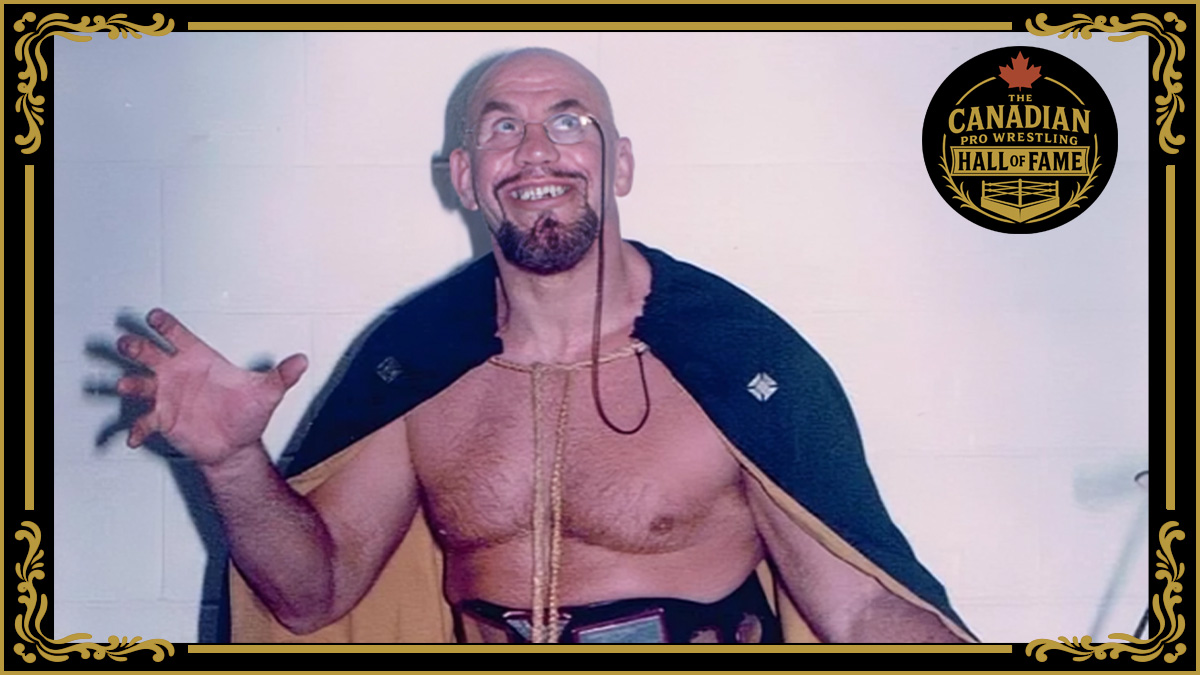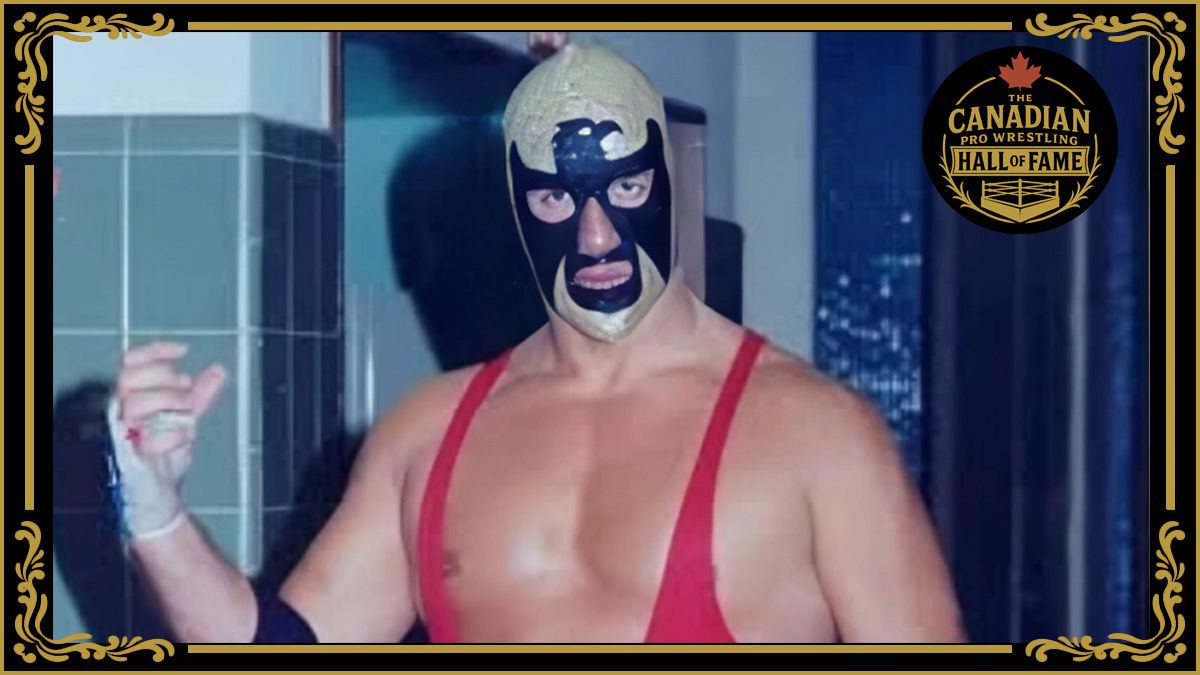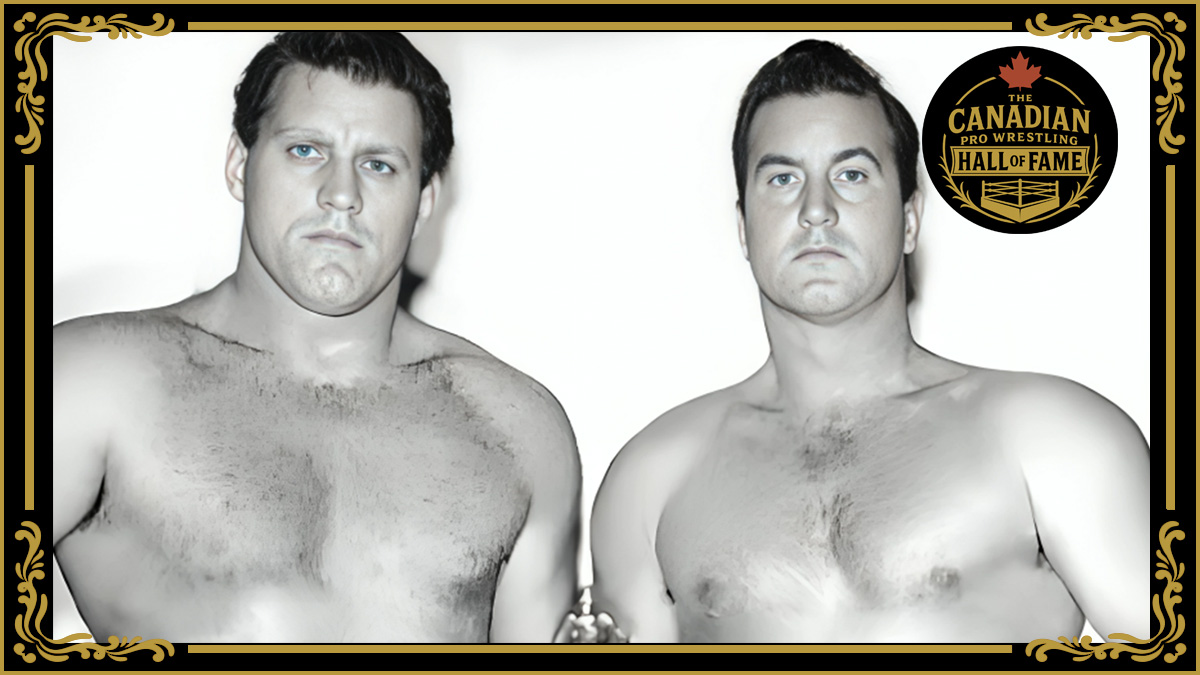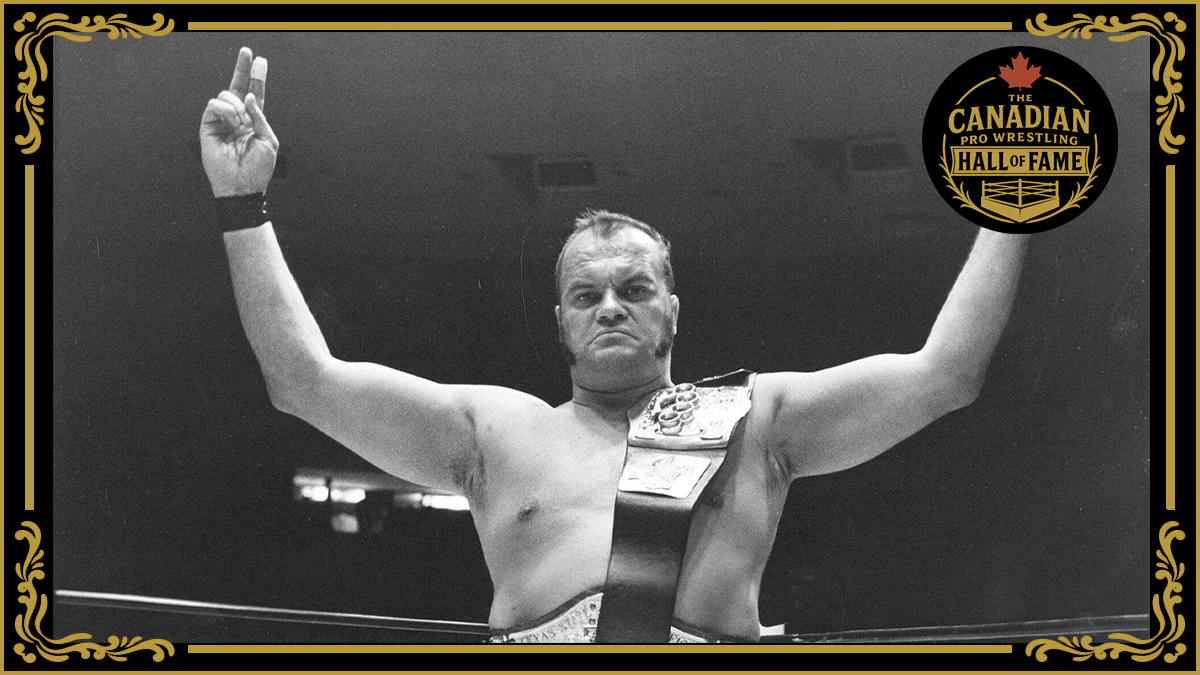Killer Karl Krupp has both his detractors and his proponents — sometimes the same person.
One would be Leo Burke.
In an interview a few years back, Burke praised Krupp: “If I had to name one heel that I’d want to start a territory with, and draw money, I would start with Killer Karl Krupp. I’d put up with the headaches.”
Those headaches?
“He was never happy with the money, for one thing. He’d be threatening to leave if you didn’t give him ‘x’ amount of dollars,” said Burke. “Little things, like if he happened to work with somebody that he thought didn’t make him look good, he’d be complaining. But that was him. You just put up with it. … He just wanted to be treated like a kid.”
The Killer Karl Krupp gimmick came to him later in his career, but no one can say he didn’t embrace it 100%.
In Scott Teal‘s Whatever Happened To… #41 newsletter, Ed “Moondog” Moretti explained that Krupp had difficulty separating his wrestling character from real life. “Killer Karl Krupp… what a nice guy. I love him to death, but I think he actually believed he was Killer Karl Krupp. He had a partner in the Maritimes named Hans Hermann, who wrestled in Calgary as Butch Moffitt, the Jackal. We were at home and Krupp was telling him … this is in a German accent now … ‘You cannot go outside. You cannot be seen at the beach with your family. You are a German wrestler and need to live this gimmick twenty-four hours a day if you want to get over.'”
George Momberg was born May 13, 1934, in Holland. The family survived the tough times of World War II, and their father headed to Canada in 1949, working on a farm in Ilderton, Ontario, just outside the bigger city of London. Two years later, the Canadian government helped foot the bill for the Momberg family to come over too.
In an interview in 2002, Hank Momberg, who was 11 years younger than his brother George, shared some of the family history. Their father got a job driving a hydro truck, which was much more stable than farming. They lived in the Niagara region — in St. David’s, then Beamsville — until moving to Burlington in 1957.
Hank marveled at his brother’s transformation. “He was a skinny runt when he came here. By the time he was 17, 18, he was 6-foot-2 and only weighed about 170 pounds. He suffered from bronchitis in Holland quite a bit. Over here, he seemed to excel. Put on a lot of weight.”
A soccer player in Holland, young George was a rower in St. Catharines, and competed as an amateur wrestler. Despite not playing football in high school, he fell into the semi-pro game, playing for the Hamilton Ti-Cat Jr. B team (the “Bees”). A defensive end, in 1957, he graduated to the senior Ti-Cats, where he reportedly wore #65 and #66 but it is tough to determine how much playing time he got. Momberg was claimed by the Ottawa Rough Riders, and their famed coach Frank Clair, in September 1957, though it doesn’t appear that the 225-pound tackle played much. It was back to semi-pro in the Ontario Rugby Football Union (ORFU) in London for the Lords in 1957, and, in 1959, for the Sarnia Golden Bears. A shoulder injury appears to have derailed Momberg in 1958, and he was cut by Ottawa. He wasn’t done with football however.
At the same time he was playing football, Momberg was wrestling amateur — and he had a frequent opponent. Bob Steckle of Kitchener was the heavyweight who always seemed to be in Momberg’s way. They fought often, with Steckle coming out on top in the 1956 eastern Canadian finals and then, in May 1957, in the national heavyweight final in St. Catharines. It was Steckle that went to the British Empire Games in Vancouver in 1954. Momberg did, however, claim the Ontario YMCA heavyweight championship in March 1957, and his St. Catharines team was best in the province.
Then, for the 1959 Pan-Am Games, the Kitchener-Waterloo Record‘s Len Taylor reported that “Bob Steckle, the Kitchener grapple man, won his way to Chicago’s Pan-Am Games via the weight scales … He was tied with George Momberg after the weekend trials but Momberg weighed 25 pounds more so the lighter man was chosen since weight is a vital factor in wrestling.”
At the 1962 World Championships, in Toledo, Ohio, Momberg competed in the 213.5-pound weight class, and lost to Kamit Kaplan of Turkey, and then Lutvia Akhmedov of Bulgaria. It is uncertain how Momberg ended up representing his country, as he finished second at nationals, to Avro Wahtra, in early June, in Guelph, Ontario.
Then it was back to football. He played for the ORFU “B” level Oakville Black Knights in 1962. For someone who hadn’t grown up playing, the gridiron remained in his blood, and in 1970, he tried to make a comeback with the ORFU’s senior level K-W Guelph Oaks. Larry Anstett of the Kitchener-Waterloo Record talked with Momberg:
Momberg, more commonly known as The Flying Dutchman by Twin City professional wrestling fans, is making a determined comeback after a seven-year absence from football.
“K-W people hated me and booed me out of the auditorium when I wrestled there,” said Momberg, who’s grappled with the likes of Dick (Bulldog) Brower and Sweet Daddy Siki. “I sure hope it will be different on the football field.”
Momberg, who said K-W was an “excellent sporting town with good haters as well as good lovers,” a muscular 240 pounds on a six-foot-two frame. A neatly trimmed beard halts at either side of his chin.
“If you think he looks mean now, just wait until we get him a face mask,” said head coach Peter Murphy. Murphy’s assistant, Bill Hickie, just shuddered and said, “I’m glad he’s on our team.”
Like so many pro wrestlers out of “The Factory” that was Hamilton, Ontario, Momberg worked at one of the steel plants. In his case, he was at Dofasco. And, like so many other Hamilton wrestling grads, he exercised at the Hamilton Jewish Centre and the Hamilton YMCA. There were plenty of wrestlers to train the wannabes. Officially, Jack Wentworth was his trainer.
“George and I worked at Dofasco together, and he was a real good amateur wrestler,” recalled Murray Cummings. “He was a big guy. He had a great face for wrestling. I got him into Wentworth’s. Wentworth said, ‘Don’t work with this guy, he can hurt you. He’s too stiff.’ People were afraid of him. But George and I worked. He didn’t learn really quickly because he had his own ideas about what he wanted to do. We were pretty good friends, but then he was on the road and I didn’t see him too much.”
Under his real name, Momberg starts showing up on pro wrestling cards in 1966. Often he was billed as “Dutch” Momberg, a name he appears to use until 1972, and “Mad Dog” Momberg.
The renamed Killer Karl Krupp starts showing up in December 1971, in Stampede Wrestling. He was always grinning, coming to the ring with a riding crop and wearing an eye piece with a bald head or brush cut. Like many German gimmick wrestlers, he used an iron claw to the face as a finisher, and even teamed with Fritz Von Erich in Japan as The Iron Claw Masters. (Note there was a Karl Von Krupp in the 1960s, which is not George Momberg.)
Hank Momberg said his brother didn’t love the gimmick, even if he ended up living it. “It really irked him, being Dutch and having gone through the war years. He took more like the First World War type German, with the monocle and all. He didn’t want to get involved with Nazism at all. It was more of a German from the First World War.”
There’s an element of truth to some of the publicity for Krupp, if you know the back story. Here’s a write-up by Jeff Howell in Wrestling News in the June-July 1976 issue:
German wrestlers have established reputations as some of the toughest mat warriors in the world! For instance, Hans Schmidt Waldo Von Erich, Seigfreid Stanke, Horst Hoffman, Baron Von Raschke, Kurt and Karl Von Steiger, and Hans Mortier all are thrilling fans with their violent ring battles in various parts of the country
Then there is Baron Von Krupp, also known as “Killer” Karl Krupp.
Karl is rapidly gaining a reputation as the most vicious wrestler in the profession today. When he’s in the ring, he’ll use any number of foul means or dirty tactics to win his matches but win he does!
Von Krupp was born in Mannheim, Germany thirty-four years ago. He stands four inches over six feet in height and weighs two hundred-sixty-five pounds.
Karl first became interested in becoming a professional wrestler when he was fourteen. He joined his mat team in school and became so interested in the sport that he determined to make his living through it. Von Krupp became an outstanding amateur champion at both the secondary school and collegiate level in his native Germany, and turned professional when he was in his early twenties.
And, as per usual in pro wrestling, others are happy to take credit. Al Zinck, who promoted in Atlantic Canada with Rudy Kay, said the whole Krupp thing was his idea. “George Cannon, in Toronto, told me about him. He was doing preliminaries for Frank Tunney, but he couldn’t see the potential the guy had,” said Zinck. “I could see it. I told him to get himself a whip, a pair of boots, a black cape, and a monocle. And to shave his hair. Boy it went over like a can of worms, after about six weeks.”
Though Zinck’s timeline doesn’t quite line up — his promotion the Maritimes only ran in the summer, and there’s no record of Krupp in the summer of 1971 in the territory — there is no question that Krupp became one of the biggest stars ever on Canada’s right coast.
“We gave him his first break back home in the Maritimes,” said Burke, whose brother Rudy Kay was the primary promoter, with Zinck managing TV. “Unfortunately, he got a late break, but he made decent money after that. If you’re a promoter, you want to draw money, right? You couldn’t get a better guy than Krupp, if you could handle him. Like I said, he was very temperamental. You had to handle him with kid gloves, and baby him a little bit. But as far as drawing money, he was, to me, one of the greatest.”
Krupp held the Maritimes version of the North American Heavyweight Title in the summer of 1972 twice and would be back again the next summer to win it again … and then when he settled out in the area, he was a regular on Emile Dupre‘s Atlantic Grand Prix shows, his last recorded match coming in July 1987. Dupre once said that Great Malumba (Lawrence Liger) “and Killer Karl Krupp, they drew money for me.”
The names Krupp is most associated with in the Maritimes aren’t wrestlers though, but announcers. Bill McCullach was “Miisster Mc Cluck Cluck” and then Clary Flemming would stand with the microphone as Krupp sneered “Missssterrrrr Flemming.”
Take out a map and stick a pin anywhere in North America, and chances are Krupp worked there, as well as numerous trips to Japan, Puerto Rico and Australia and New Zealand.
In particular, he always fit in well with the Funks in Amarillo, where he was a regular holder of the NWA Texas Brass Knuckles title. In a 2001 SlamWrestling.net chat, Dory Funk Jr. noted that he wrestled Krupp often. “He was one of our top heels in Amarillo many years ago, and he passed away a while ago. He was a classic bad guy German. He used to come to me before interviews and say ‘I will put on my ugly face’ not realizing that it was already on.”
Out in the Pacific Northwest, Dutch Savage got to know Krupp.
“Krupp was crazy! He was fun. He was just a lot of fun. I had a ball with him,” began Savage launching into a story.
They had a match in Portland, Oregon, where Savage chased Krupp out of the building.
Savage: “You’re going into the mud puddle.”
Krupp: “I’m not going in the mud puddle. I’m not getting my tights dirty!”
“So I threw him in the mud puddle. He had mud up his nose, in his ears. He was so mad at me he almost broke the door off the hinges chasing me back in the building,” laughed Savage. “We sold out about 16 weeks in a row with Krupp. To this day, he’d get me laughing so hard, I couldn’t do anything in the ring.”
Like others, Savage noted that Krupp had credentials, though he didn’t always have to use them as a pro. “He was a double-tough son of a gun. You didn’t mess with him too much. If he didn’t like you, he’d let you know. With me, I had a ball with the guy. Can’t say anything bad about him, ever.”
Similarly, Geeto Mongol (Newt Tattrie) recalled Krupp’s unpredictability. Crazy guy, but terrific. … Big heart, he had a big heart,” said Tattrie. “We’re in Japan and the bus driver stopped to get something from a restaurant, and we’re all in the bus. Karl Krupp got behind the wheel and tried to hide the bus. You know in Japan, the streets were no wider than the bus. He got the bus stuck up a street and you couldn’t get the doors open on the bus! That’s chaos, boy!”
Japan is also the beginning of the end for Momberg. It was during a tour there that his brother said that he picked up hepatitis A.
Having settled into a life away from the ring, Dupre would entice him back in the summers for matches, but for the most part, Momberg was a truck driver for Day & Ross.
In late 1987, a feature on him from the Maritimes got picked up by Canadian Press, and ran in newspapers across the country.
“If you took a blueprint of my body … you’d see nothing but dislocations and breaks. That’s what comes with the type of business and the type of sport I was into,” Momberg told writer Rob Mills, keeping kayfabe, claiming that Krupp was his real name and that he was born in Mannheim, Germany. He summed up his career:
Everybody has to have some sort of showmanship … The bad guys tend to be a little more colourful, because it’s easier. You know, people hate the villain. And what it is, too, in my case, is that the crowd picks its own favourites, and I could step in the ring and automatically I was a villain … because of my German background, and the way I look, and because I believe in rough and tough. Regardless of how much I was hated by the fans, in the long run I’ve always demanded a certain respect from the people. I’ve never had any real disrespect show towards me. I might have been hated, but it was a respectful type of hate.
A rarity in wrestling, Krupp said that he had retired that summer — and kept his word. “I didn’t have the drive anymore,” he said. “I got so many injuries that I lost count. I don’t want to be spending the rest of my life in a wheelchair, so I had a discussion with my doctors and they both advised me to quit while I was ahead, before I was totally disabled.”
Hank Momberg noted that George had separated from his wife a number of years before he retired, and had three daughters.
On August 24, 1995, George Momberg died in Moncton, N.B.




